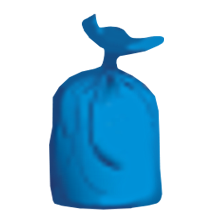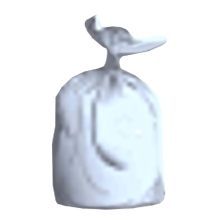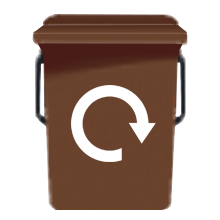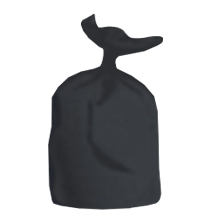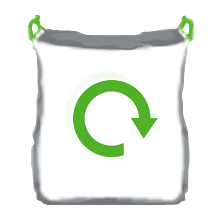Signs of labour

There are many signs that labour is starting or that you are in labour:
Contractions
- When you have a contraction, your uterus becomes tight and then relaxes. It can feel like strong period type pains. Your contractions may start off irregular, but will become longer, stronger and more frequent.
Backache
- You may get backache or the aching heavy feeling some women get with their monthly period.
The 'show'
- Your cervix contains a plug of mucus which comes away just before or in early labour. This small amount of sticky, jelly like mucus is called a show and may come away as a single blob or in several pieces. It can be clear or with some streaks of red blood, which is normal. A show indicates that the cervix is starting to open. Labour may follow or may take a few days.
Your waters break
- Your baby is surrounded by a bag of waters, they may break before labour starts.
- If your waters break before labour, it may be a slow trickle or a sudden gush that you cannot control. Contact Loveridge Ward if this happens.
Labour
There are three stages in labour, the first stage is where the contractions make your cervix gradually dilate and is usually the longest stage.

The second stage is when your cervix is fully dilated until the birth of your baby.
In the third stage the placenta comes away from the wall of the uterus and is delivered.
Latent phase of labour
- The latent phase of labour is when your cervix starts to soften and thin with dilatation from closed to approximately 3-4cms with irregular contractions. This can take hours or a few days.
- It is advisable during the latent phase to make sure you eat and drink to maintain your energy levels.
- You will possibly be advised to stay at home during this time. If you come in to Loveridge Ward we may advise you to return home as this is the best place for you.
- If any of the following happen then you need to call Loveridge ward:
- your waters break
- you're bleeding
- your baby is moving less than usual
- you're less than 37 weeks pregnant and think you might be in labour
Coping in early labour
- It is important in early labour that
- You remain mobile, walking or dancing around
- Keep hydrated, drinking fluids like isotonic sports drinks which help to keep your energy levels up
- Have a snack to keep your energy levels up. Many women don't feel hungry and some feel or are sick, but little and often.
- Try to remain calm with relaxation and breathing exercises you may have learnt in antenatal classes. Your birth partner can help by doing these with you.
- Have your birth partner give you a massage
- Take paracetamol according to the instructions on the packet - paracetamol is safe to take in labour
- Have a warm bath
Pain relief
Labour can be painful, so we offer a range of pain relief options for you.
You're likely to feel more relaxed in labour and better placed to cope with the pain if you:
- Know what to expect, this will help you feel more in control and less frightened about what's going to happen. Talk to your midwife at your 36week birth planning appointment.
- Attend our antenatal classes Great Expectations.
- Learn how to relax, stay calm and breathe deeply
- Keep mobile - your position can make a difference, so try kneeling, walking around, or rocking backwards and forwards.
- Bring a partner or friend to support you during labour, don't worry if you don't have a partner - your midwife will give you all the support you need.
- Get your partner to massage your back
- Have a relax in the bath
TENS (Transcutaneous Electrical Nerve Stimulation)
- This machine will transmit electrical impulses to pads attached to your back. These block pain signals and help your body to produce endorphins.
- You can remain mobile and it won't interfere with your labour.
- It is easy to use and can be used it at home as well as in the hospital.
Using water for labour and/or birth
- Being in water can help you relax and make the contractions seem less painful. You can also float around to get into any position.
- It can be used in conjunction with entonox (gas & air) and massage. It may only be effective in early labour.
- Women who labour in water are less likely to need intervention and other drugs.
Entonox (Gas & Air)
- This is a mixture of oxygen and nitrous oxide gas. It will not remove all the pain, but it can help reduce it making it more bearable.
- It's easy to use, you control it yourself breathing through a mouthpiece. Entonox takes about 15-20 seconds to work, so start as a contraction begins, taking slow, deep breaths.
- It can make you feel a little light headed and sometimes nauseous.
Opiates - morphine
- This is an injection given into your leg which helps you to relax and get some rest during the first stage of labour. It generally lasting up to 4 hours but can make you feel sick, it is usually given with an anti-sickness.
- Opiates cross the placenta and can affect the baby causing them to be slower to breathe at birth. This can happen if you progress quickly and baby is born within two hours of having the injection.
Epidural
- An epidural is local anaesthetic which is injected into the small space between two vertebras in your back. 90% of women get good pain relief from the waist down, with the remainder getting partial relief. You may still be aware of the contractions but they should be more manageable.
- Epidurals take about 20 minutes to set up and about 20 minutes to work.
- You will have a catheter inserted as your mobility is reduced and you will not have the sensation to pass urine.
- You will need to have baby monitored on the CTG and IV fluid to maintain blood pressure.
Monitoring baby in labour
Your midwife will monitor you and your baby during labour to make sure you're both coping.
If you are classed as low risk, this will be with a sonic aid to listen to your baby's heart every 15 minutes in the first stage and every 5 mins in the second stage. You'll be free to move around as much as you want and we will work with you and the positions you get in.
Your midwife may suggest electronic monitoring if there are any concerns about you or your baby or if you choose to have an epidural.
Sometimes it may be difficult to monitor baby or there are periods of loss of contact, we advise using a clip onto baby's head called a fetal scalp electrode.
Induction
- An induced labour is one that's started artificially and is undertaken on Loveridge ward.
- If your labour hasn't started at 41 weeks, you will offered induction of labour nine days after your due date. This is due to a higher risk of stillbirth or problems for the baby if your pregnancy goes over 42 weeks.
- If there are any risks to you or your baby you will be offered induction this could be if you have high blood pressure or if your baby isn't growing.
- It's your choice whether to be induced or not. If your pregnancy lasts longer than 42 weeks and you decide not to be induced, you should be offered increased monitoring to check your baby's wellbeing.
- You will have a vaginal examination where the midwife will assess your cervix. A pessary will be inserted into your vagina. It is a controlled-release pessary called propess which can take 24 hours to work.
- If after 24 hours you are not in labour you will be examined and if unable to break your waters then you will possibly have another pessary inserted.
First Stage
- During your labour your midwife will offer you regular vaginal examinations to see how your labour is progressing. If you do not want to have these, you do not have to but we would advise you too.
- Your cervix needs to open about 10cm for your baby to pass through it. This is what's called being fully dilated.
- Sometimes your labour can be slow or even stop, the midwife will offer you two options,
- 1. Breaking your waters or
- 2. Hormone drip called syntocinon
- 1. By breaking your membranes is often enough to make contractions stronger, more regular and more painful. This is also known as artificial rupture of the membranes (ARM) and will be done during a vaginal examination.
- 2. If breaking your waters doesn't work you will be offered a hormone drip called syntocinon. It is administered into your vein in your hand or arm and increased slowly until you are contracting 4 contractions in 10 minutes regular and strong.
Second Stage
- You will be encouraged to get into the most comfortable position,you can try to sit, lie on your side, stand, kneel, or squat. If you suffer from backache kneeling on all fours can be helpful.
- When you are fully dilated you may get the urge to push and you will be encouraged to push, it will feel like you need to open your bowels.
- When you baby's head is ready to crown, your midwife will encourage you to take short breathes and to stop pushing and to allow time for your perineum to stretch ensuring a slow delivery of the head and baby.
- If everything is well, baby can be delivered onto you with skin to skin commencing immediately with feeding when ready preferably within an hour.
Third Stage
- There are two types of management for third stage depending on your risk factors, physiological or active:
- Physiological management is delivery of the placenta without using any drugs and your body expelling the placenta naturally.
- The cord is left uncut until after it has stopped pulsing allowing the blood to continue to transfuse to baby, usually taking about 2 - 4 minutes.
- It can take up to an hour for your placenta to come away and for you to push it out.
- If the placenta doesn't appear to be separating or you begin to bleed heavily then you will be advised by the Midwife or Doctor to change to active management.
- Active management is where you receive an injection of oxytocin to speed up the process of separation and reduce the risk of excessive bleeding.
- If all is well with baby then we encourage delayed cord clamping allowing further transfusion of blood to baby.
- Once the placenta is separated the midwife will pull on the cord to help deliver the placenta.
- The injection can cause you to feel quite nauseous and sometimes vomit.
Assisted Delivery
- An assisted delivery is when the doctor assists you to deliver your baby either by ventouse or by forceps. You will still have to push with the contractions.
- You may need to have help with the delivery if
- You have been pushing for too long
- You have run out of energy to safely deliver your baby.
- Your baby's heart rate may be above or below the normal levels or not getting adequate oxygen.
- Sometimes if you have high blood pressure, you may be advised by the obstetrician to have an assisted delivery to reduce the length of the second stage.
- On average, 10-15 in 100 deliveries are assisted and it is more likely if you are having your first baby.
- If you have an epidural this can be topped up, if time, otherwise you will be given some local anaesthetic to numb the area before the forceps are inserted.
- Your legs will be put into lithotomy (stirrups) and your bladder will be emptied.
- Forceps -The blades of the metal forceps will be placed either side of your baby's head and locked together.
- Depending on the position of baby they may need to be turned first before delivering. The doctor will gently pull as you push with a contraction. This can take several pulls and you will possibly be given an episiotomy (cut) to reduce the risk of sustaining a tear.
- Ventouse -The doctor will place the ventouse cup onto your baby's head through your vagina. The cup may be attached to a special vacuum machine or to a hand-held suction pump that creates a vacuum seal between the cup and your baby's head.
- The doctor will make sure that none of your vaginal skin is caught in the vacuum seal.
- As you push with a contraction the doctor will gently pull. This can take several pulls and you will possibly be given an episiotomy
- Listen carefully to the doctor and midwife during the delivery so they can tell you when to push and pant.
- Once your baby's head is delivered, your obstetrician will remove the forceps or ventouse from your baby's head. Your baby will be delivered onto your abdomen, for 'skin-to-skin'.
Caesarean Section
- There are some situations where the safest option for you or your baby is to have a caesarean section. As it is major surgery, it will only be performed where there is a real clinical need for this type of delivery.
- Caesarean sections are usually carried out under spinal or epidural but sometimes there is a need for a general anaesthetic if baby is needed to be delivered quickly.
- A cut is made across your abdomen, just below your bikini line. The scar is usually hidden in your pubic hair.
- If you are expecting twins, triplets or more, it is more likely that you will be advised to have a caesarean section. This will depend on how your pregnancy progresses, the position of your babies and whether the babies share a placenta.
Skin to skin
Skin to skin contact helps the baby to adjust to life outside and supports mothers to initiate breastfeeding.

After your baby is dried they will be placed skin to skin with you against your bare chest and covered with a blanket and hat to keep warm. This can last for at least an hour or until after the first feed.
Skin to skin is important as it,
- Calms and relaxes both mother and baby
- Regulates the baby's heart rate and breathing,
- Stimulates digestion and an interest in feeding
- Regulates temperature
- Enables colonisation of the baby's skin with the mother's friendly bacteria, providing protection against infection
- Stimulates the release of hormones to support breastfeeding and mothering.
After delivery, you baby will be checked and weighed, the head will be measured and baby will be labelled with two identity bracelets.
Support will be given with whichever form of feeding you choose.
If for any reason you choose to or need to stay in hospital, then you will be transferred to a bed on Loveridge ward, your length of stay will depend on why you have been admitted. Once you and your baby are well then you will be discharged home.
